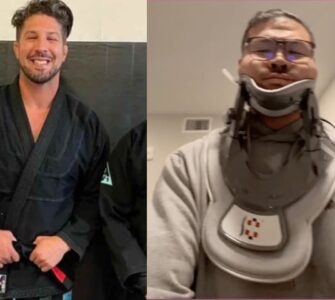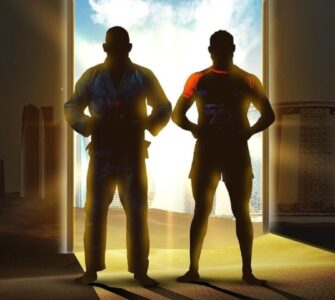To get injured is something one should never wish to any opponent on the mats, since we know how hard it is.
We are in a sport where there is so much manipulation of the body and often it is involuntarily. The good thing about BJJ is that you become more flexible, your bones and muscles become stronger but there is a limit for each one of us and when we go over that limit, injuries will happen. There are some injuries which are more serious than others, but when you have to be off the mats for more than 1 month it can be depressing, especially if you were preparing for a competition.
For the time you’re off, there are some things that can help you throughout this difficult period. If you hurt a knee or ankle for example, you can work on your grips, work on your flexibility exercises, you can study videos, read and also set some long term goals for your return. Visiting your BJJ academy and watching the training occasionally, will help a lot.
Dr Kickass, Mike Piekarski, a Doctor of Physical Therapy, Former MMA Fighter, Brazilian Jiu Jitsu black belt (Follow him on instagram.) talks about when is the right time to return to BJJ when injured:
“Returning to jiu jitsu after an injury is a very difficult decision and often an athlete will return too early. Generally a jiu jitsu practitioner will have less pain and figure they are “good enough” and jump back into full training. If an athlete returns too early there is a risk of re-injury or a secondary injury as the athlete alters their movement patterns to protect the initial injury.
Criteria to consider when returning to jiu jitsu after an injury:
1️⃣Time: Is the injury adequately healed? The physiology of tissue healing based on the area that is injured.
2️⃣Movement-based: Does the athlete have sufficient unilateral mobility, strength, stability and / or power to perform each movement required for jiu jitsu?
Both criteria need to be considered prior to returning. .
AVERAGE Healing Times:
* Muscle strain (Grade 1) 0-2 weeks
* Muscle strain (Grade 2) 2 weeks – 3 months
* Muscle strain (Grade 3) 4 weeks to 6 months
* Ligament sprain (Grade 1) 4-30 days
* Ligament sprain (Grade 2) 3 weeks to 3 months
* Ligament Sprain (Grade 3): 7 weeks to 1 year
* Tendon (Acute tendinitis): 3 weeks to 8 weeks
* Tendon (Laceration): 5 weeks to 6 months
* Bone: 5 weeks to 3 months
* Ligament Graft: 3 months to 2 years
This post is meant to be educational for the healthcare professional (PT, chiro, ATC etc…) helping their athlete return to sport and not meant as medical advice for the injured athlete.
.
Reference:
1️⃣Axe, M. J., & Shields, C. L. (2005). Potential applications of hyaluronans in orthopaedics. Sports Medicine, 35(10), 853-864.
2️⃣Manal, T.J., Hoffman, S. A., Sturgill, L. The knee: Physical Therapy Patient management Utilizing Current Evidence. Current Concepts of Orthopedic Physical Therapy, 3rd edition. American Physical Therapy Association”

















